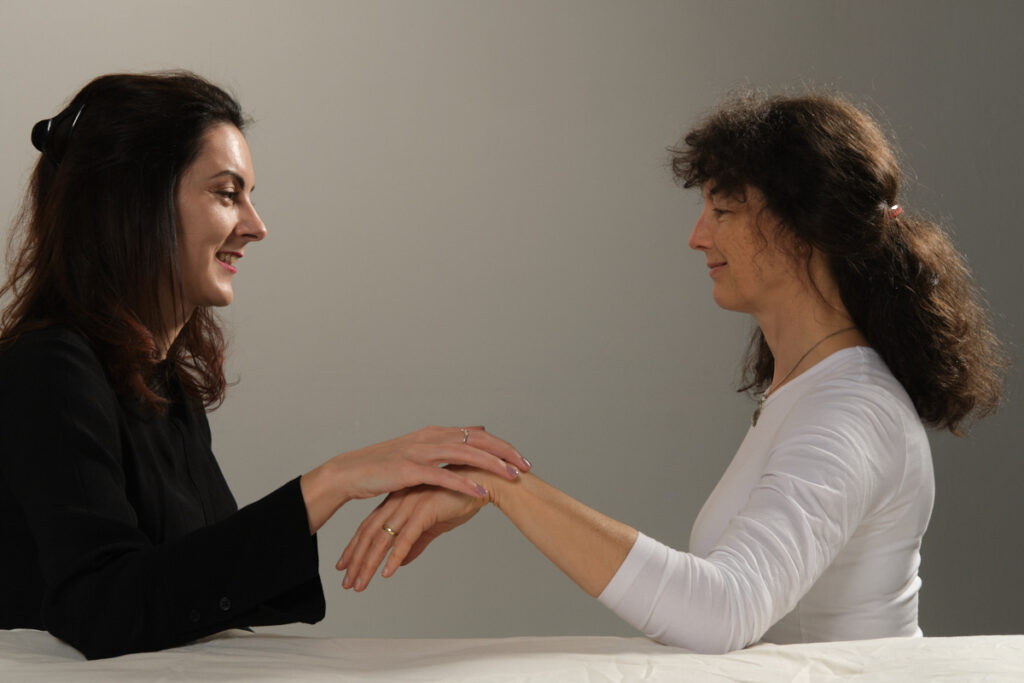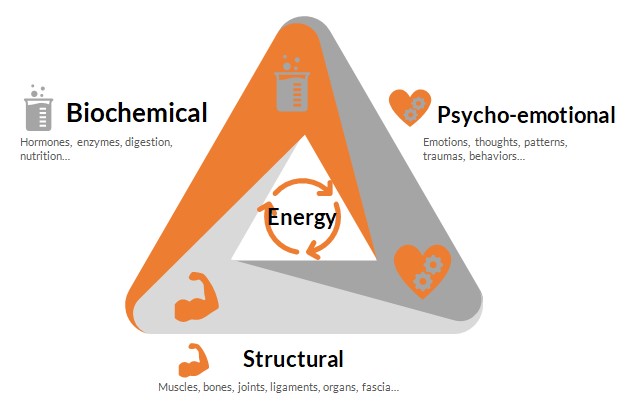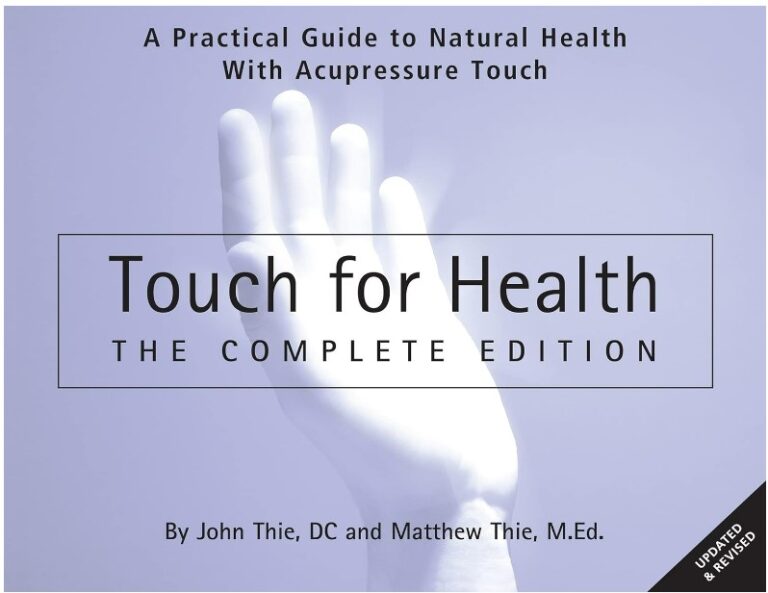Kinesiology
Kinesiology - definition
Kinesiology is a holistic method of alternative medicine that identifies the original causes of imbalance and restores self-healing capacity. Literally, kinesiology means “the study of movement” from the Greek words “kinesis”=movement and “logis”=reasoning.
To find the causes and correct recovery methods, the kinesiologist uses muscle testing. A muscle test uses muscle tension. An extreme example of the loss of muscle tension is collapsing when someone receives shocking news. The body remembers any stress (too much or too little of something) and indicates this when questioned – on a smaller scale but comparable to collapsing: by a weakened muscle tone.

A short history of kinesiology
Applied kinesiology is a relatively young methodology using ancient knowledge.
The godfather of applied kinesiology is Dr George Goodheart, an osteopath who began using concepts of acupuncture for his own treatments, adding reflex points (also linked to organs, Chapman, osteopath, 1930s), neurovascular reflexes (from Bennett, chiropractor, 1930s ’30) and elements of meridian theory (from traditional Chinese medicine). Goodheart began using muscle testing for evaluation. His work gave rise to the current method of muscle testing in kinesiology: using light pressure for 2 seconds to determine stress.
At first, muscle testing and the link between muscles and organs were only used by medical specialists (mainly chiropractors but also doctors, etc.). To make the beneficial effects of kinesiology safely accessible to the public, John Thie created Touch for Health in the 1970s. Touch for Health highlights the connection between muscles and meridians of traditional Chinese medicine, and thus the “triangle of health”. The triangle of health represents the structural connection between structural, biochemical and psychoemotional dimensions of health
The principle of kinesiology is holistic: a stress on one of these areas can cause imbalance in different areas – and the other way around, bringing one area back into balance can bring the whole system back into balance. Touch for Health offers a number of ways to restore this balance using muscles and meridians, including points of the vascular and lymphatic system.
From the 1980s onwards, different branches of kinesiology developed further and combined various areas of knowledge with muscle testing and their link with meridians: the basics used in Europe are Educational Kinesiology (a kinesiological application of the principles of Brain Gym) and principles of Three in One Concepts .
What is kinesiology? What is it not?
Kinesiology is an alternative approach to complementary care for holistic well-being. Guidance to activate your own ability for balance is central and helps you identify links and gain insights based on stress stored in the body.
It is complementary – not a replacement for regular (medical) care.
It is cooperative based on active self-accountability and equality – not passive surrender.
It is self-knowledge and own choice – not a “prescription” from someone else.
It is looking for potential root cause – not diagnostics.
Why kinesiology? What can it do?
Due to its holistic approach and interrogation of the body, kinesiology is ideal for:
- all often psychosomatic complaints: headache, digestive complaints, sleeping problems, fatigue…
- or vice versa: to anchor psycho-emotional changes in the body or to
- resolve emotion underlying behavior (emotion influences perception, thinking and ultimately behavior)
- improve performance (study, work, attention…)
- deal with stress and anxiety
A kinesiology session
A session takes around an hour (count on 75 to allow room for preliminary/debriefing) with the typical course:
- Intake/Anamnesis: discussion about the goals of the session, complaints and medical data as a basis
- We move to the massage table, the client takes a comfortable position on his/her back without shoes (but fully clothed). After some basic verifications, using muscle testing and a variety of protocols, we investigate the problem, the root cause (in the past) and the protocol(s) to bring the system back into balance. We execute the protocols and verify the results.
- Finally, we calmly return to the chairs to discuss any questions and follow-up and to arrange payment. Exercises can be recommended for the coming period to anchor the changes
My kinesiology techniques
Kinesiology is a very colorful toolkit with a large number of “tools,” all using muscle testing for research. From this rich toolkit, every kinesiologist has his or her own tools in addition to a personal approach. My main directions are:
- Touch for Health: based on meridian theory and the symbolism of Chinese medicine, I create energetic profiles and balance them using neurovascular, neurolymphatic, acupressure or specific muscle points
- Edu-kinesiology: I use movement to improve learning in the broadest sense – from listening, reading or concentration to direct school performance or exams. Profiles can also be used to highlight preferred methods of tackling problem and enable new patterns.
- Three in One Concepts: I use behavioral concepts in combination with various techniques, such as eye movements (similar to EMDR),
- Visualizations
- Craniosacral reflexology: I can apply the relevant parts of my craniosacral practice in a kinesology session for optimal combined results.
Do you want to try what kinesiology can do for you? For a try-out session:


